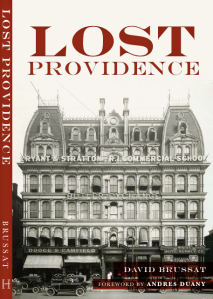How thrilling to read that Great Britain’s housing ministry has just issued a proposal to bring beauty and the public more to the forefront of planning and design decisions on the Sceptered Isle. Is this a “mandate” for beauty? Certainly not in the sense that President Trump sought to mandate beauty via executive order. It remains to be seen how President Biden will follow up on the potential for unity it embodies. Much as I recognize the strength the Trump E.O. would have placed behind the ideal of beauty – and tradition – others rightly note that a mandate may not be the only way to do it.
Nevertheless, the skeptic in me recommends that Brits “count the spoons,” as one observer put it after placing the new proposals in the context of other developments in British planning circles, not to mention the difficulty of reforming the bureaucracy in charge of a huge and rapacious industry.
The proposed reforms of the “Living with Beauty” policy proposals arise from the Building Better, Building Beautiful Commission, chaired by the late classicist Sir Roger Scruton. The proposals were announced on February 30 by the housing minister, the Rt. Honorable Robert Jenrick, M.P.
I never read “Living with Beauty,” the final commission report issued after Scruton’s return to its chairmanship, from which he was unfairly dismissed. I read the interim report by Scruton’s replacement, Nicholas Boys Smith, issued before Scruton’s reinstatement (upon his return, they shared the chairmanship). I have looked through the new National Model Design Code.
Such reports normally strive to be diplomatic, and the same may be said of the new policies just announced. Scruton and Boys Smith shared an understandable reluctance to define beauty or to set standards in ways that go up the craw of the modernists with excessive vigor. While frankly guilty of producing the conditions that the new policy will try to correct, modernists cannot (alas!) be excluded from the new process going forward.
The result of this diplomacy is a definition of beauty that you could drive a truck through, and a reliance on the repetition of ideals to assure their achievement. A press release from the housing ministry said of the new proposals:
The measures mean the word “beauty” will be specifically included in planning rules for the first time since the system was created in 1947 – going back to a previous time when there was a greater emphasis on whether a building was considered attractive to local people.
The proposals are silent on defining beauty, except for repeating the word again and again, and associating it with qualities with which few would disagree. Aside from promoting “good quality design” over “poor quality,” the proposals offer little genuine guidance, obviously a difficult task if not tackled straightforwardly. Too much diplomacy is an invitation to those comfortable with the system and its attitudes to try to avoid reform and prolong comfort. Design quality, it may be supposed, is no less in the eye of the beholder than beauty.
On the other hand, the fact that a commission was charged with lifting beauty and the public out of the mire, with new proposals to carry out a new emphasis on both, would be totally inconceivable without the prior work and the recent participation of Scruton, Boys Smith and others who recognize the value and popularity of tradition. Likewise, tradition in architecture has gotten a lift from Trump’s executive order, which caused a rumpus that put classical architecture in the news like nothing before. (The U.S. has no equivalent to Prince Charles.)
Many classicists joined modernists in criticizing Trump’s order, mostly because either they disliked the idea of a mandate, even as they ignored the existing mandate in place since 1962 – or, in some cases, they just hated Trump. The torrid attack on Trump’s order by establishment modernists was sufficiently ridiculous to have been fully understood by the general public.
No doubt such a process will proceed in Britain with the “Living with Beauty” proposals. Studies there have identified how differently modernist architects and the public view traditional and modern architecture. And a poll by the Harris organization found in October that some three-quarters of Americans prefer traditional to modern architecture across a wide demographic spectrum, at least for federal buildings and courthouses. It is perfectly likely that Britons, and for that matter peoples around the world, have similar attitudes.
Despite the diplomatic language of the new reforms, their intent is crystal clear.
It may be too soon to judge how the modernist establishment in Britain will react to the new proposals. However attenuated, the “Living with Beauty” policies are sure to have a positive influence. Developers will have to actually listen to the public. They will have to wiggle around rules in which the concept of beauty, however defined, is set in concrete. They never had to do this before, and they might find it difficult now. And yet maybe the new proposals will be so easy for developers and modernists to get around that their associations will not bother to object. Or maybe the reforms will just be ignored. It has happened before. That is likely only in the unlikely event that the public, so active in recent years, retreats back into its shell. Even so, the new rules will open doors for the public to object to projects they do not consider beautiful by their own definition.
Maybe this is how Biden should approach the issue raised by his predecessor.




Pingback: Mandating magnificence in Britain? - Zbout
Classicism isn’t available to all. And contrary to popular belief or that Churchill quote.
CULTURE breeds architecture, not the other way around.
You could replace a housing project with classical style building in 10 years it’d fall apart.
Meanwhile Tokyo, sensible citizens who lost all their classical architecture to rampant urbanization and US bombing rebuilt their city in the cheapest architecture they could afford to build quickly.
But their aversion to wastefulness, cultivated a aesthetic even in it’s urban cores. They made due…
Buildings that would be labeled eyesores in America, are common in Japan.
They made it work.
https://jillywelch.files.wordpress.com/2011/11/tokyochirstianbarnardblog.jpg?w=584&zoom=2
Even their alley’s

LikeLike